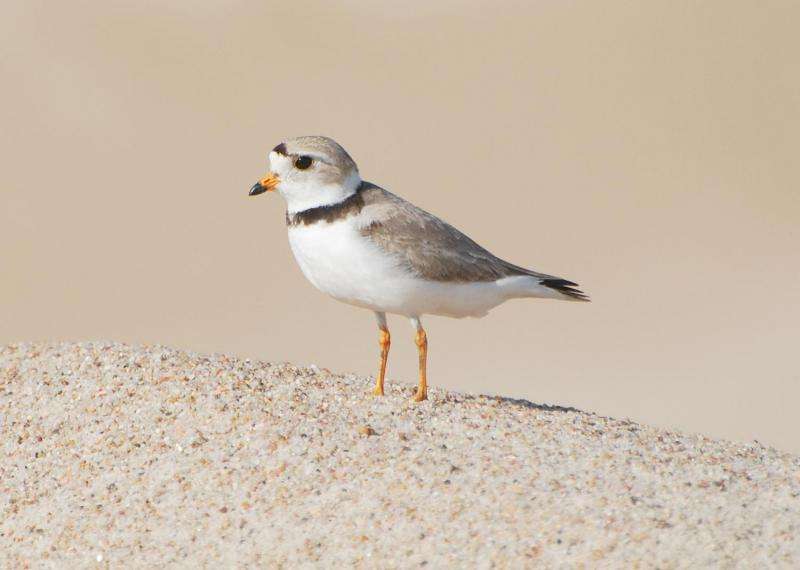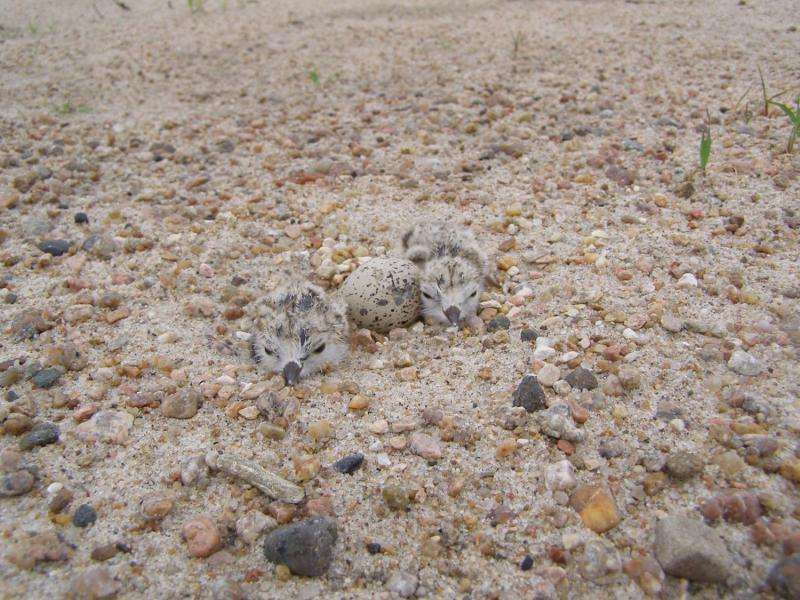Piping plovers losing breeding habitat to wetland drainage

Piping plovers, a federally threatened species of shorebirds, are likely losing wetland breeding habitat in the Great Plains as a result of wetland drainage, climate change or both, according to a new U.S. Geological Survey study.
"Our findings suggest that if drainage continues, there will be continued declines in the amount of breeding habitat for piping plovers at wetlands in the Great Plains," said Lisa McCauley, who led the study as a USGS postdoctoral student and currently works at The Nature Conservancy. "Managers can use information from our study to better restore and conserve valuable wetland ecosystems for the protection of this species."
The USGS scientists analyzed piping plover survey data from 1979 to 2011 for 32 wetlands in the Prairie Pothole Region of North Dakota. They found that consolidation drainage, or the drainage of smaller wetlands into another wetland—typically for agricultural purposes—results in fewer and fuller wetlands with less shoreline nesting space for piping plovers.
According to the study, the probability of plover presence was 99.6 percent greater for wetlands located in undrained watersheds when compared to wetlands where 10 percent of the watershed was drained.
Piping plovers breed on wetland or reservoir shorelines and river sandbars in the northern Great Plains of the United States and Canada. Climate varies across this area, so when river or reservoir shorelines are flooded, unflooded prairie wetlands can provide habitat and vice versa. Consolidation drainage contributes to habitat loss for plovers by making wetlands fuller and shorelines smaller.

Like consolidation drainage, the fate of plover habitat is also tied to potential changes in climate. If precipitation increases in this region, the amount of wetland habitat for plovers could continue to decline.
"High and stable water levels resulting from consolidation drainage threaten biodiversity, wildlife habitat and flood storage in the northern Great Plains," said Michael Anteau, a USGS scientist and team leader for the project. "This work on a federally listed species provides managers with a more complete view of ecosystem services affected by consolidation drainage."
Provided by United States Geological Survey


















